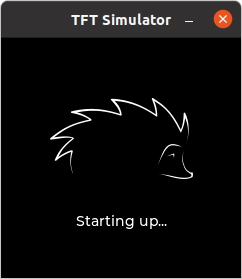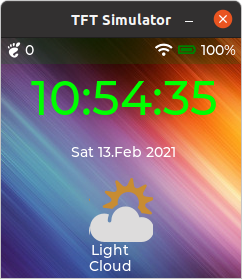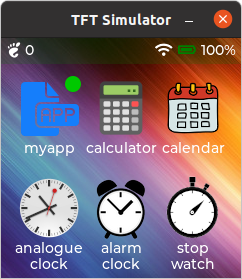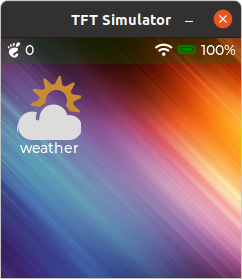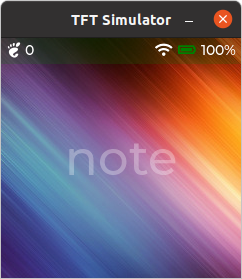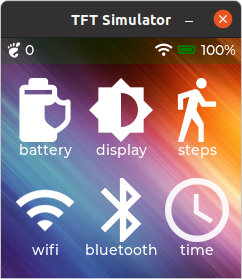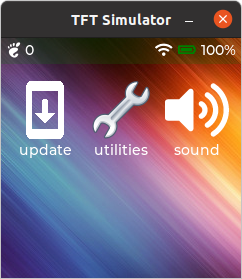
Difference: WatchGui (2 vs. 3)
Revision 32021-02-01 - UliRaich
| Line: 1 to 1 | |||||||||||||||
|---|---|---|---|---|---|---|---|---|---|---|---|---|---|---|---|
| |||||||||||||||
| Changed: | |||||||||||||||
| < < | The t-watch Graphical User Interface and how to add your own applications and settings | ||||||||||||||
| > > | The T-Watch Graphical User Interface and how to add your own applications and settings | ||||||||||||||
Introduction
The " factory firmware The infrastructure can be tested with the Unix port of MicroPython in conjunction with LVGL, based on the SDL2 driver. This allows me to quickly test the complete GUI on the PC as long as no hardware dependent features are used. This means that power management using the axp202, time functionality using the pcf8563 or applications using the bma423 accelerometer must be separated from the GUI code. | |||||||||||||||
| Added: | |||||||||||||||
| > > | The Graphical User InterfaceWhen the program boots a splash screen is shown, while hardware initialization takes place.
One that the hardware is ready the GUI starts up. The GUI is based on the LVGL tile view widget (lv.tileview). The base GUI consists of 8 tiles as a matrix with 4 columns and 2 rows. The upper row is used for applications while the lower row contains a note tile and all the setup functions.
The individual tiles use a style with transparent OPA (opacity) such that the wallpaper on the tile view is visible on all tiles. In addition, a status bar shows the current state of the hardware like
| ||||||||||||||
|
--
Comments
| |||||||||||||||
| Added: | |||||||||||||||
| > > |
| ||||||||||||||
Ideas, requests, problems regarding TWiki? Send feedback
